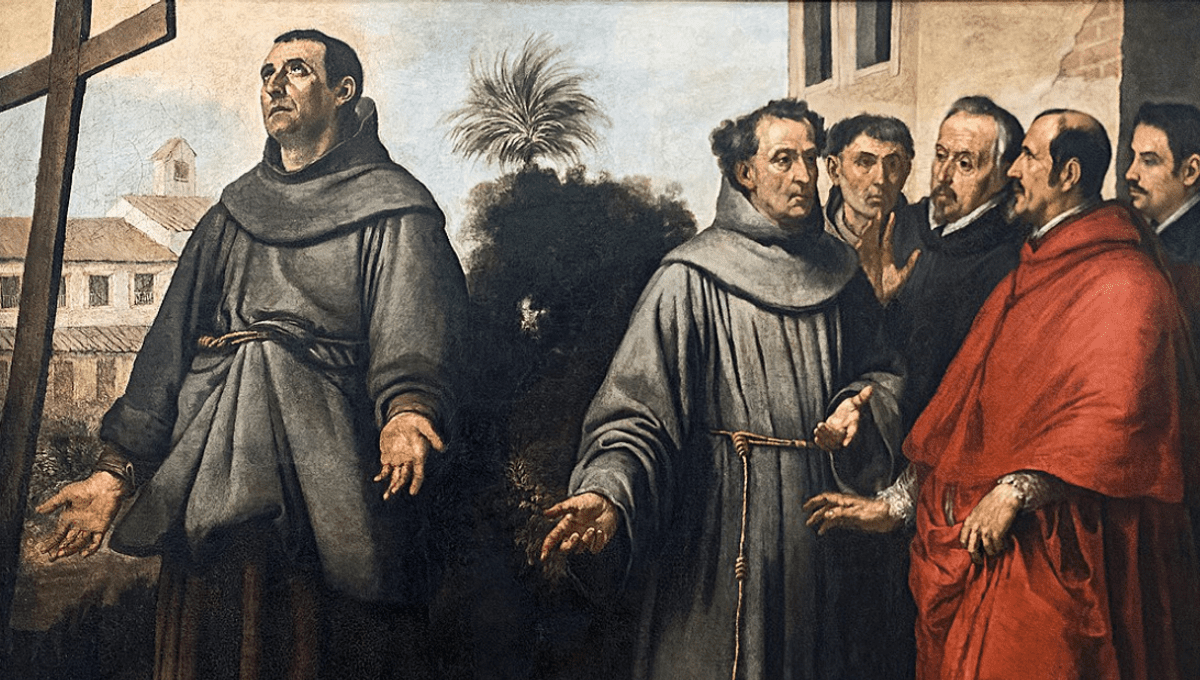
Swapping out your comfort blanket for the remains of a long-dead public figure might turn your stomach, but in history, such extremes have been reported as a success in treating maladies that had failed to respond to medicine. The “miracle” of one such bed body led to the posthumous canonization of Fray Diego de Alcalá, a Spanish Franciscan lay brother whose miraculous remains were said to have the power to heal.
In life, Fray Diego served among a group of missionaries who set up camp in the freshly conquered Canary Islands. Throughout his service, he became revered as a healer, including his work during an epidemic in Rome in 1450 where he spent many months “curing” the diseased.
However, his divine healing powers did not seem to be transferrable to his own ill health as in 1463 he died as the result of an abscess. However, Fray Diego went on to perform many healing miracles after his death.
“The legend surrounding St. Diego’s death provides an important clue,” wrote Álvaro Pascual Chenel and Ángel Rodríguez Rebollo in a 2014 paper. “He is said to have died from an infection from an abscess, but his corpse, instead of emitting a foul odor, as would be expected, remained incorrupt, did not undergo rigor mortis, and continued to exude a pleasant fragrance.”
Just two weeks after the friar’s demise, his perplexingly fresh fragrance was being appreciated by none other than King Henry IV of Castile. The king was lured to the corpse following word of Fray Diego’s miracles having himself fallen from a horse and injured his arm. Sure enough, a bit of skin-on-skin contact as the pair held hands reportedly cured him of his affliction.
Old biographies tell of a second miraculous episode following the canonization that promoted the corpse to Saint Diego, which Chenel and Rebollo refer to as the Healing of Don Carlos, Prince of Asturias. Following a nasty tumble down a staircase, Don Carlos was severely injured, so much so that “the most celebrated doctors and surgeons in the kingdom” couldn’t find a remedy.
Considered effectively dead, Don Carlos’s father, King Philip II of Spain, threw up something of a Hail Mary in ordering that the body of St. Diego be brought to lay in the Prince’s sickbed alongside him. The king was no stranger to religious remains as a devout Catholic with a “holy greed for relics”, wrote historian Maria Cuervo. His own collection clocked 12 skeletons, more than 100 heads, and thousands of bones belonging to saints.
And so it was that the mummified saint, now dead for over 100 years, was laid next to the sickly prince. “That night while the Prince was asleep, the Saint appeared to him,” quoted Chenel and Rebollo. “And he said to the Prince: ‘trust the Lord and you will recover your health,’ … and after a few hours the prince woke up… and so it was, that the saint healed him, or more precisely, brought him back to life…”
Saint Diego would have to get used to becoming a bedfellow to the compromised, as the survival of another member of the Spanish royal family (perhaps more familiar to the meme generation as “Parsnip Guy”) is, by his accounts at least, attributable to sharing a bed with Saint Diego and a second mummy: Isidore the Laborer.
King Charles II of Spain – as Parsnip Guy was known in life – was known as El Hechizado (the Bewitched) for the many physical ailments he experienced in his lifetime. While he credited their (largely unsuccessful) management in part to sleeping with human remains, it’s expected that many of his conditions were the result of historic inbreeding among royals (which is always a bad idea, even in the face of trying to repopulate the planet).
While the practice of taking the mummified remains of relics to your sickbed has, thankfully, died out, more abstract remains are still widely appreciated for their alleged healing powers. That said, we’ll take our chances with a Lemsip.
[H/T: Thoughty2/Arran Lomas]
Source Link: The Saints And Healers Whose Mummified Corpses Were Placed In The Beds Of Diseased Royalty